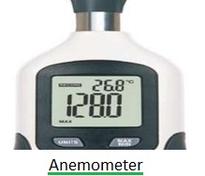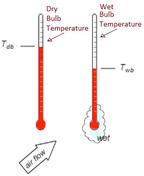Understanding Transmissometers and Runway Visual Range (RVR)
Advertisement
This page explains what a transmissometer is and its role and benefits in determining RVR (Runway Visual Range). The transmissometer is a vital instrument used in aviation (avionics) to measure RVR, providing critical information for pilots.
What is Runway Visual Range?
- Visibility on the runway is paramount for the safe landing and takeoff of aircraft.
- RVR is typically in the range of 50 to 2000 meters.
- It represents the distance from which a pilot of an aircraft can see the runway surface markings that delineate the runway or help identify the centerline. The pilot needs to be positioned on the centerline of the runway while in the aircraft.
- The term RVR is commonly used in aviation meteorology and avionics.
Transmissometer: Definition and Features
The visual range is affected by several environmental factors, including fog, rain, snow, and storms. This range is often measured as RVR (Runway Visual Range) or MOR (Meteorological Optical Range). MOR typically ranges from 10 to 10,000 meters.
A transmissometer functions as a transmittance meter. It measures the transmission coefficient of light as it passes through the atmosphere, which allows it to determine RVR and/or MOR.

The following are the typical components or modules of a transmissometer and their functions:
- Transmitter: Employs a lamp with spectral characteristics similar to the lights on the runway.
- Receiver: Uses a photo diode and appropriate electronics. The response is designed to mimic the human eye’s response.
- BLM (Background Luminance Monitor): Measures luminance in the range of 2 to 40,000 candela per square meter, covering conditions from night to bright daylight. It usually offers a measurement accuracy of approximately +/-10%.
- Software: Embedded software controls the operation of the transmissometer and provides an interface with the ATC (Air Traffic Control) tower.
- Communication with Control Tower: Data is transmitted either via Wi-Fi or landline to the control tower.
Transmissometer Vendors
Here are some of the vendors or manufacturers of transmissometers:
- WET Labs, USA
- Vaisala, Sweden
- MTECH Systems Pvt. Ltd.
- Bluefin Robotics
- CSIR-NAL INDIA
Benefits of a Transmissometer
- Accurate Visibility Measurement : Provides precise readings of atmospheric visibility, crucial for aviation and meteorology.
- Enhanced Aviation Safety : Helps pilots and air traffic controllers assess runway visibility, reducing the risk of accidents.
- Weather Monitoring : Assists meteorologists in tracking fog, haze and air pollution levels.
- Improved Road and Marine Safety : Used in highways and shipping lanes to detect low visibility conditions.
- Industrial Applications : Monitors air quality in factories, tunnels and mines to ensure worker safety.
- Environmental Monitoring : Helps assess pollution levels and study the impact of atmospheric particles.
- Automated & Continuous Operation : Provides real time visibility data for quick decision making.
- Regulatory Compliance : Ensures adherence to aviation, transportation and environmental safety standards.
Conclusion
A transmissometer is a vital instrument for measuring visibility, enhancing safety in aviation, transportation and environmental monitoring. Its real time data helps in making informed decisions, improving operational efficiency and ensuring compliance with safety regulations.
Advertisement
 T&M
T&M 






